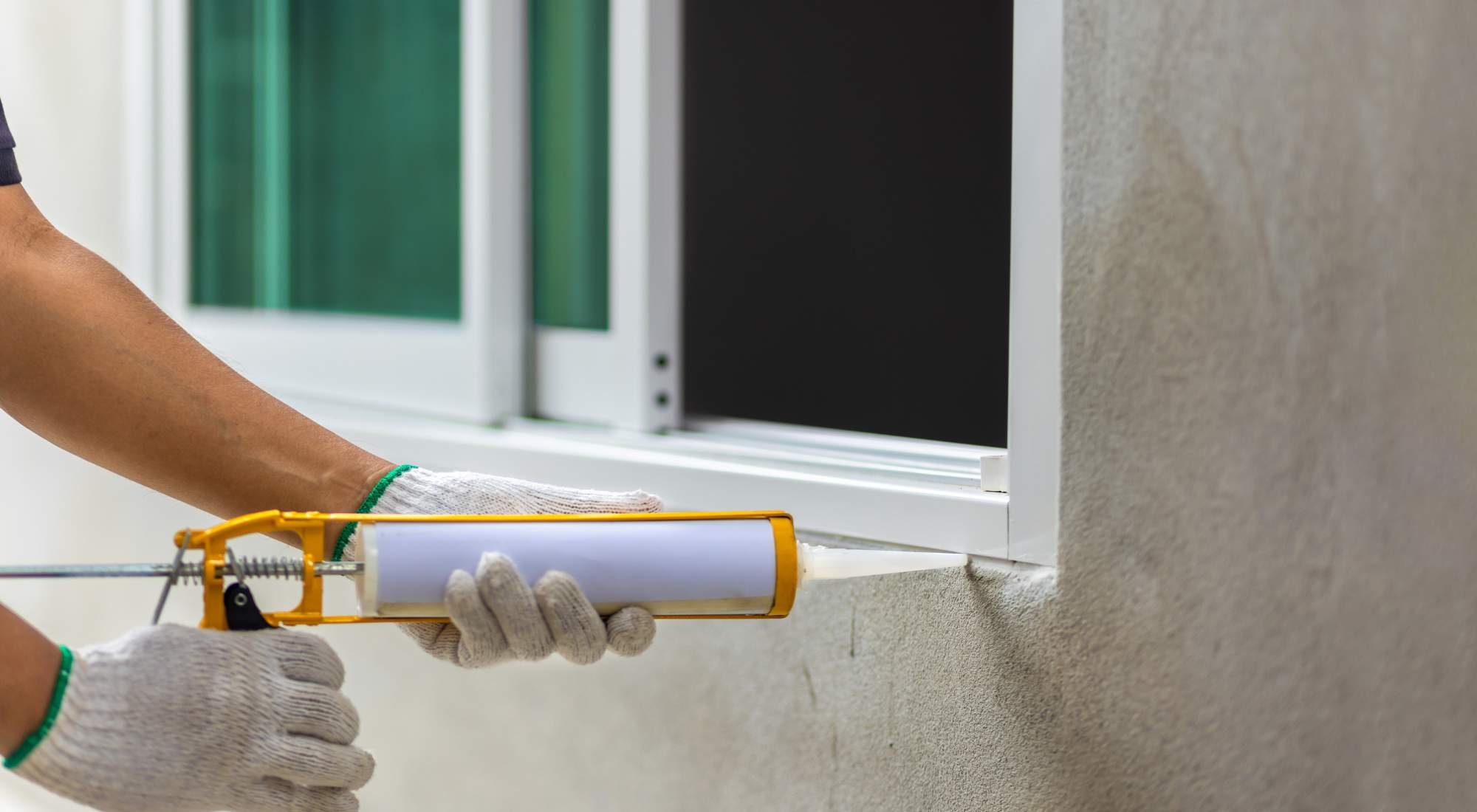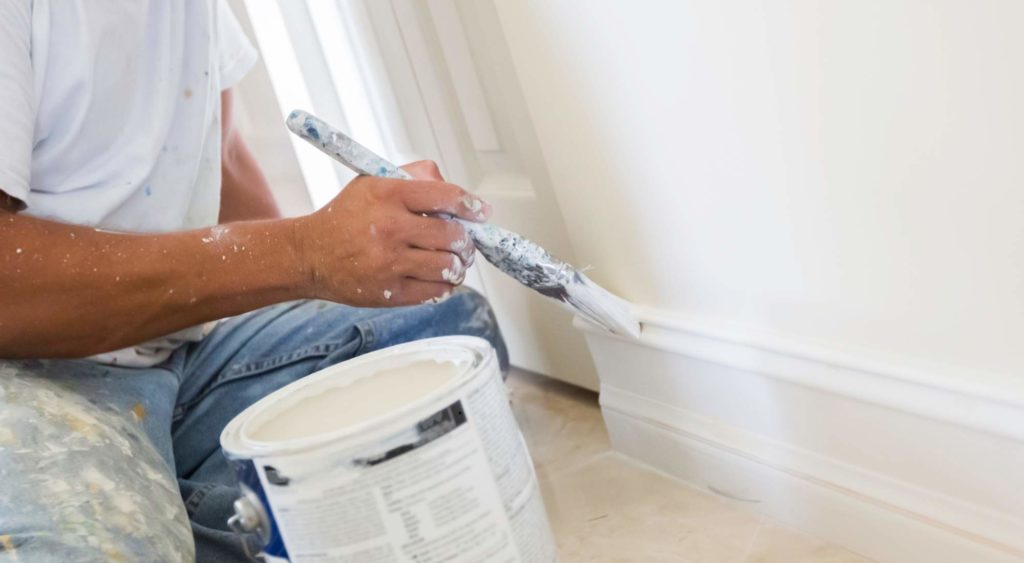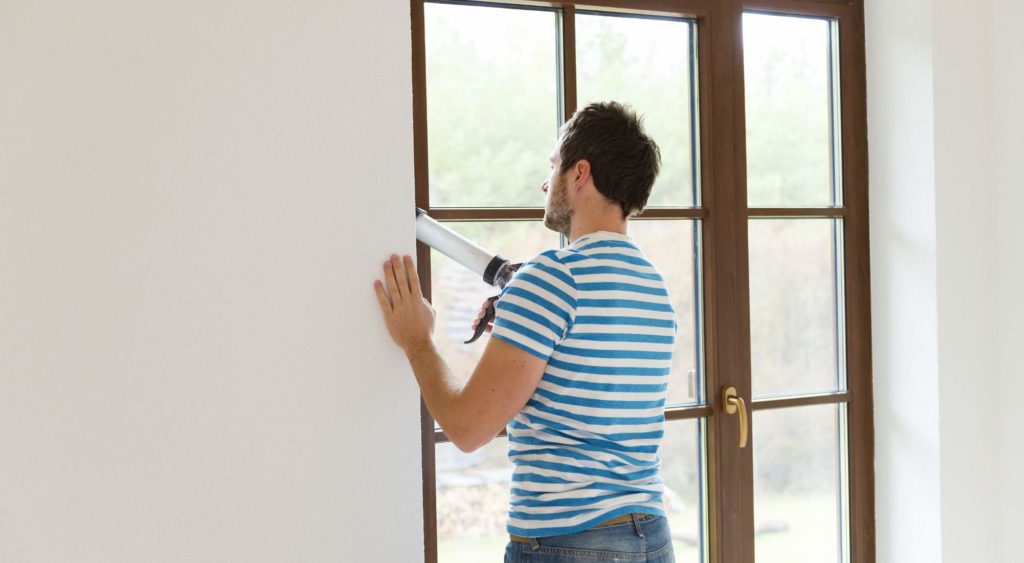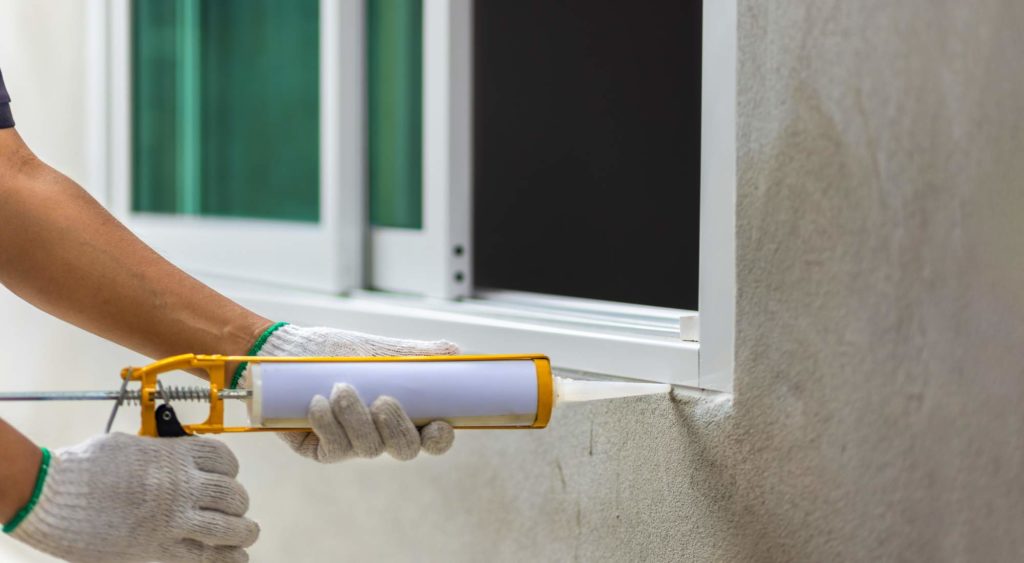Caulking – one of the most overlooked steps of the average homeowner’s DIY painting project.
Aside from improving your home’s appearance, caulking protects your interior from water, pests, drafts, and more. The simple task can save you from having to repair extensive damage to your home later on.
Whether you’re putting the finishing touches on a newly constructed home or renovating an old one, we’re here to help you achieve a high-quality result.
Read on to learn the benefits of caulking, the nuances of painting caulk, and how to refresh the look of your home like a professional.
Table of Contents
- Are You Supposed To Paint Over Caulk?
- Should I Caulk Before or After Painting?
- What Happens if You Caulk After Painting?
- FAQs About Applying Caulk Before or After Painting
- Two Brothers Painting: Your Caulking and Painting Experts in PDX
Are You Supposed To Paint Over Caulk?
Yes! In addition to improving your home’s visual aesthetic, paint acts as a protective film that reinforces caulk applied to gaps, cracks, or holes. In most cases, painting over caulk in visible areas is recommended if the caulk’s formula allows for it.
There are countless caulks on the market that can and should be painted if visible.
One of the most common types of caulk for interior projects is Acrylic Latex (Painter’s Caulk). It is paintable, affordable, effective, easy to use, and lasts around 10-15 years, depending on its environment and application.
If your project demands something with better flexibility and adhesion, you can search for Acrylic Latex Caulk that is labeled as “siliconized” or “with silicone.” These hybrid caulks form a waterproof seal that will not shrink or crack due to temperature changes. They are more versatile than standard Acrylic Latex caulks while maintaining paintability.
Be cautious of purchasing non-paintable products, such as 100% Silicone caulks.
Due to its waterproof and temperature-resistant properties, silicone caulks are often used for backsplashes or around plumbing fixtures in high-humidity areas of the home, such as the kitchen or bathroom. They absolutely cannot be painted and require a painstaking process for removal. If unintentionally applied to areas you intend to paint, they can turn your home’s transformation into a disaster.
Should I Caulk Before or After Priming?
It is typically okay to complete caulking before priming if you are applying the caulk directly onto a raw material. If you are applying the caulk to a finished surface, you will want to use a base coat of primer first.
Fresh caulk adheres most effectively to unpainted or unprimed wood and vinyl surfaces but does not stick well to stained surfaces.
Regardless of the initial order, you will need to apply an additional coat of primer before painting the caulked area. Primer will allow the caulk to stick to the paint while providing a smoother, more professional finish.
How Long Should Caulking Cure Before Painting?
While caulk may feel dry to the touch within an hour of the initial application, you will need to allow it to “cure” for several hours before painting to ensure it has formed a secure seal. You can find information for drying and curing times in the manufacturer’s instructions for your chosen caulk.
In general, most caulking products on the market cure within 24 hours of application, but this largely depends on temperature, humidity, caulk formula, and the thickness of the application.
Some fast-drying caulks are designed to dry in as little as 30 minutes, while others may take multiple days.
Because of these variances, Two Brothers Painting recommends caulking the day before you paint to ensure the caulk has had adequate time to cure.
What Happens if You Caulk After Painting?
It is recommended to caulk before painting. Not only does unpainted caulk provide a less effective seal than painted caulk, but it tends to shrink, crack, and discolor over time, resulting in an unsightly finish.
While the appearance of unpainted caulk may not seem bad at first, it collects dust and organic matter quickly when it is not protected by a layer of paint and eventually turns brown or yellow in color.
FAQs About Applying Caulk Before or After Painting
Why Is Caulking Important?
Areas where your home’s surfaces meet cabinets, windows, doors, plumbing fixtures, and other structures are prone to gaps, holes, and cracks.
Caulking around these areas is an important step that serves several functional and aesthetic purposes such as:
- Waterproofing – Caulking around areas that are exposed to excessive moisture prevents mold, mildew, and wood rot.
- Pest control – Caulk prevents bugs and insects from entering your home through small gaps, cracks, or holes.
- Energy efficiency – Ensuring that vulnerable areas of your home are properly sealed prevents unwanted air from escaping inside or outside.
- Aesthetics – Caulked edges provide a smooth and clean appearance that improves aesthetics and increases your home’s value.
Should You Remove the Old Caulking Before Caulking and Painting?
Yes, removing old, deteriorated caulk before applying new caulk and painting is recommended.
Old caulk is unsightly and ineffective in protecting your home’s interior from the elements. Removing old caulk ensures a clean and effective seal, allowing the new caulk to adhere to the surface properly.
How Do You Choose the Right Caulk for the Project?
Different caulking formulas are better for certain home improvement projects than others. The right caulk for your project will depend on a variety of factors, including:
- Type of surface: Some caulk formulas are better at adhering to certain surfaces. For example, acrylic latex caulk adheres well to porous surfaces such as wood and masonry. If you’re working on a non-porous surface such as metal or glass, a 100% silicone caulk will adhere much better than an acrylic latex caulk.
- Location (indoor or outdoor): Some caulks are better equipped for outdoor exposure. If you’re working on an exterior project, consider using a weather-resistant and UV-resistant caulk such as silicone.
- Purpose: You may want to account for the caulk’s intended purpose. If you are applying caulk to an area of high movement, you may want to opt for a more flexible formula to prevent cracking, chipping, or breaking. You may also consider searching for a caulk with water-resistant properties if your project area is prone to moisture or water exposure.
- Paintability: If you intend to caulk and paint a visible area, make sure to pick a paintable caulk formula. Avoid silicone and, instead, opt for an acrylic latex caulk if your project allows for it.
Should You Caulk Before or After Painting Next to New Cabinetry?
It is generally recommended that you fill in the gaps and cracks around your new cabinetry with caulk before painting. However, there are some exceptions.
You may consider caulking after painting around a vanity, toilet, or other fixture that is attached directly to the drywall. Using a clear caulk after painting the area creates a smooth transition and protects the color of the fixture .
Should You Caulk Before or After Painting the Exterior of Your Home?
Aside from giving the most aesthetically pleasing results, caulking before you paint is the most efficient way to prevent moisture, air, and pests from traveling through gaps in your home’s exterior.
There are some products on the market that eliminate the need to paint after caulking. Hardieplank, for example, uses ColorPlus technology that provides color matched caulking to provide a seal that perfectly matches the planks.
When your home’s siding needs to be repaired or refreshed, be sure to check if color matched caulk is offered by your manufacturer.
Do You Caulk Baseboards Before or After Painting?
It’s best to caulk your baseboards before painting. This will ensure that all cracks, gaps, and holes are filled for a smooth and even paint application. It will also allow for a seamless transition from your wall to your baseboard.
Do You Caulk Windows Before or After Painting?
You will want to caulk your windows before painting the surrounding area for a neat and attractive finish between the walls and trim. Caulking helps seal any gaps or cracks around the window to prevent water seepage and improve energy efficiency.
Are There Times When You Don’t Need to Caulk?
While caulking is necessary to protect your home and increase its curb appeal, it’s possible to overuse it.
What types of projects don’t require caulk?
- Alternative design aesthetics: Skipping caulk may be necessary for your home’s design. For example, preserving the original appearance of older homes may require leaving exposed gaps and other imperfections.
- Areas prone to moisture buildup: Caulking certain areas of your bathroom or kitchen may trap water and lead to mold and mildew growth.
- Moving parts: Any area necessary for movement should be avoided during caulking. For example, caulking the ledge of a window frame may prevent the window from opening in the future.
- Breathable areas: Some materials, such as siding boards, are designed to allow for expansion and contraction or direct water drainage. Using excessive caulking will impede these abilities.
- Ventilation systems: Caulking around areas of airflow is not advisable if it prevents proper ventilation.
Why Does Caulk Crack After Painting?
When caulking is done correctly, it can last for several years before showing signs of cracking, chipping, or breaking.
If you see signs of early wear and tear in your caulking, it could be due to a variety of factors, such as:
- Age
- Extreme temperatures
- High humidity or movement
- Poor quality paint or caulk
- Use of non-paintable caulk
- Caulk did not fully cure before painting
- The surface was not prepared properly
- Either the caulk or the paint did not adhere properly
- Insufficient amount of caulk
Two Brothers Painting: Your Caulking and Painting Experts in PDX
Caulking and painting your home by yourself may be a cost-effective option, but hiring a team of professionals to do the job for you will ensure the highest quality results.
Two Brothers Painting has over 150 years of combined professional experience and provides unparalleled results for customers across the Portland Metro area. Our business and strong industry reputation is built on the quality of our work. Our team does the job right the first time. That’s why we have so many repeat customers.
We offer a variety of services, such as:
- Interior painting
- Exterior painting
- Pressure washing
- Cabinetry painting and refinishing
- Exterior stains and finishes
- Color matching and sampling
For the best caulking and painting results, trust Two Brothers Painting to transform your home.
Contact us today to schedule an estimate.





